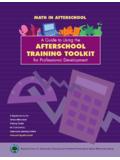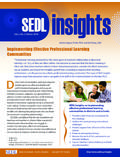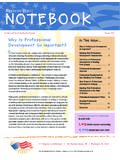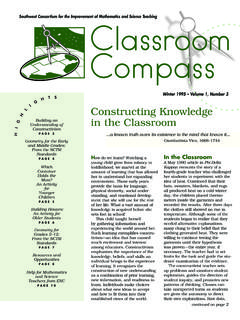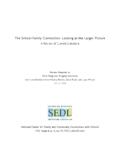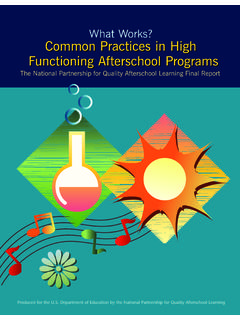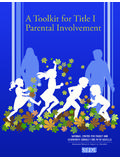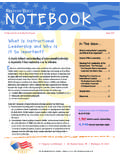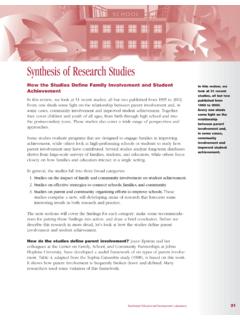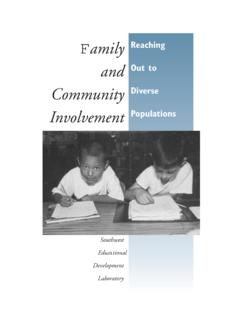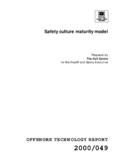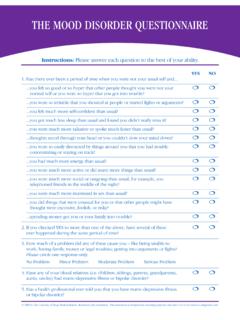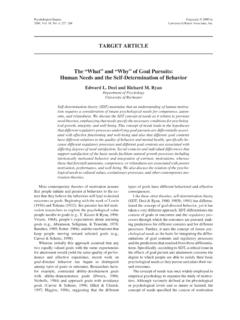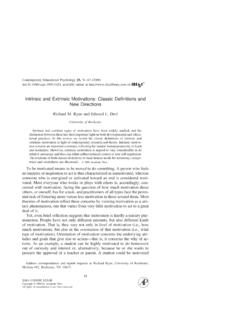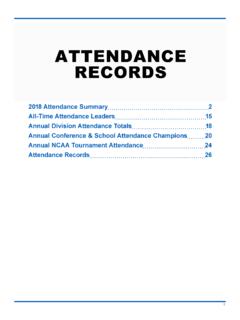Transcription of PLC- Ongoing Exploration - SEDL
1 Professional Learning Communities: An Ongoing Exploration Melanie S. Morrissey Southwest Educational Development Laboratory 211 East Seventh Street Austin, Texas 78701. 512/476-6861. 2000. Professional Learning Communities: An Ongoing Exploration 1. Table of Contents Professional Learning Communities: An Ongoing Exploration A Review of the Five Dimensions Supportive and Shared Leadership Shared Values and Vision Collective Learning and Application of Learning Supportive Conditions Shared Personal Practice Recent Literature Benefits of Professional Learning Communities Developing a Professional Learning Community An Infrastructure for School Improvement Issues Impacting School Reform Organizational Structures Focus of Improvement Work Personal and Social Dynamics Contextual Influences Leadership Guiding Questions for Learning What We Are Learning Theme 1: A Way of Operating Theme 2.
2 The Relationship of Change and Learning Theme 3: An Embedded Value Theme 4: Interdependence among the Five Dimensions First Steps Determine School and Staff Readiness Consider the Use of an External Change Facilitator Identify Barriers and Boosters Begin with the Learning Professional Learning Communities Under Construction The Role of the Principal A Culture of Collaboration A Commitment from All Staff The Presence of a Catalyst The Use of Change Facilitators Final Thoughts Professional Learning Communities: An Ongoing Exploration 2. Professional Learning Communities: An Ongoing Exploration As researchers and practitioners examined school improvement efforts of the last decade or more, it became apparent that something important was missing.
3 The narrow, piecemeal attempts made in the past to improve schools lacked the fundamental supportive cultures and conditions necessary for achieving significant gains in teaching and learning. Such attempts were insufficient. Too often, teachers worked in their own isolated classrooms, struggling with the needs of challenging students and lacking productive interaction with colleagues, through which they might have gained new insights and understandings about their practice. Many teachers remain ill prepared to teach every student successfully and lack the skills to challenge students by offering high-quality intellectual learning tasks. In addition, principals often do not know how to help teachers address their own critical learning needs.
4 We believe that professional learning communities offer an infrastructure to address these issues. The structure provides a context of collegiality, which supports teachers and administrators in improving their practice through learning new curriculum and instructional strategies and the methods for interacting meaningfully with each child. In other words, professional learning communities provide opportunities for professional staff to look deeply into the teaching and learning process and to learn how to become more effective in their work with students. Teacher learning comes first in such communities, Carmichael (1982) maintained, with the firm belief that students cannot raise their level of achievement until teachers become more effective in their own practice.
5 The term professional learning community defines itself. A school that operates as such engages the entire group of professionals in coming together for Professional Learning Communities: An Ongoing Exploration 3. learning within a supportive, self-created community. Teacher and administrator learning is more complex, deeper, and more fruitful in a social setting, where the participants can interact, test their ideas, challenge their inferences and interpretations, and process new information with each other. When one learns alone, the individual learner (plus a book, article, or video) is the sole source of new information and ideas. When new ideas are processed in interaction with others, multiple sources of knowledge and expertise expand and test the new concepts as part of the learning experience.
6 The professional learning community provides a setting that is richer and more stimulating. In the publication Professional Learning Communities: Communities of Continuous Inquiry and Improvement, Hord (1997) noted that there was no universal definition of a professional learning community. Based on an extensive literature review of the subject, Hord conceptualized professional learning communities as schools in which the professional staff as a whole consistently operates along five dimensions: (1) supportive and shared leadership, (2) shared values and vision, (3) collective learning and application of learning (formerly identified as collective creativity), (4) supportive conditions, and (5) shared personal practice.
7 Establishing a professional learning community within a school does not occur quickly or spontaneously. It requires dedicated and intentional effort on the part of the administrator and the professional staff. Each dimension develops at its own pace, many times overlapping with other dimensions. Professional Learning Communities: An Ongoing Exploration 4. A Review of the Five Dimensions Supportive and Shared Leadership School change and educational leadership literature clearly recognizes the influence of the role of campus administrator on school improvement (Hord, 1992). This leadership provided by individuals within the school is critical in guiding and supporting successful implementation of new policies and/or practice.
8 Within professional learning communities, the traditional role of omnipotent principal has been replaced by a shared leadership structure. In such a model, administrators, along with teachers, question, investigate, and seek solutions for school improvement. All staff grow professionally and learn to work together to reach shared goals. Campus administrators provide the necessary organizational and structural supports for such collaborative work among staff. Administrators display a willingness to participate in collective dialogue without dominating, and they share the responsibilities of decision making with the staff. Shared Values and Vision A fundamental characteristic of the professional learning community's vision is its unwavering focus on student learning.
9 The shared values and vision among school staff guide decisions about teaching and student learning, and support norms of behavior. In this community, the vision is what Martel (1993) would define as a total quality focus (p. 24). The values, as noted earlier, are embedded in the day-to-day actions of the school staff, wherein the learning community engages and develops the commitment and talents of all individuals in a group effort that pushes for learning of high intellectual quality. These values then create the norms of a self-aware, self-critical, and increasingly effective professional organization, utilizing the commitment of its members to seek Ongoing renewal and improvement (Sirotnik, 1999; Little, 1997).
10 Professional Learning Communities: An Ongoing Exploration 5. Collective Learning and Application of Learning Originally collective creativity (Hord, 1997), the name of this dimension has been changed to reflect more accurately the learning, and the application of learning that occurs. Professional learning communities engage school staff at all levels in processes that collectively seek new knowledge and ways of applying that knowledge to their work. The collegial relationships that result produce creative and appropriate solutions to problems, strengthening the bond between principal and teachers and increasing their commitment to improvement efforts.
